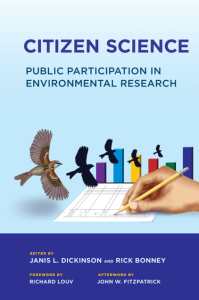A recent report by the United Nations’ Intergovernmental Panel on Climate Change (IPCC) found that we are headed for a global warming crisis much sooner than previously predicted. Prior to this new report, environmental scientists considered the threshold for code-red climate change to be a temperature increase of 3.6 degrees Fahrenheit. Now, the IPCC has found that the threshold is more accurately 2.7 degrees Fahrenheit. If we carry on as we are without rapid and large-scale changes to protect the environment, scientists give the year 2040 as the benchmark for a global warming crisis. This would mean a widespread death of most coral reefs, more frequent wildfires, worsening food shortages, rising sea levels threatening coastal cities, increased rates of poverty and decreased access to natural resources.
During times like these, we can feel powerless in making a difference regarding these issues that seem so much larger than what’s in our control. The first step, and one we can all take, is getting educated on this pressing matter. Cornell University Press’ motto is, “Changing the World One Book at a Time.” In applying this attitude to the growing climate change problem, we’ve compiled this list of environmentally conscious must-reads.

It is not a question of whether the planet is sustainable; the challenge facing life on Earth—and the life of the Earth—is whether an expanding and high-consumption species like ours is sustainable. Only new resources, new priorities, new policies and, most of all, new knowledge, can reverse the damage that humanity is doing to our home—and ourselves. A sustainable human future, Rhodes concludes in this eloquent, sobering, but ultimately optimistic book, will require a sense of responsible stewardship, for we are not owners of this planet; we are tenants.
“It’s impossible to grasp the whole planet or integrate all the descriptions of it. But because we live here, we have to try. This is not just an artistic compulsion or an existential yearning, still less an academic exercise. It’s a survival issue. This is the only planet we have. We’re stuck here, and we don’t own the place—it would be the height of arrogance to assume that we do. We’re tenants here, not owners, but we’re tenants with hope for a long-term tenancy. We want to extend our lease just as far as we can.”—from Earth

Addressing participatory, transdisciplinary approaches to local stewardship of the environment, Grassroots to Global features scholars and stewards exploring the broad impacts of civic engagement with the environment. Chapters focus on questions that include: How might faith-based institutions in Chicago expand the work of church-community gardens? How do volunteer “nature cleaners” in Tehran attempt to change Iranian social norms? How does an international community in Baltimore engage local people in nature restoration while fostering social equity? How does a child in an impoverished coal mining region become a local and national leader in abandoned mine restoration? And can a loose coalition that transforms blighted areas in Indian cities into pocket parks become a social movement? From the findings of the authors’ diverse case studies, editor Marianne Krasny provides a way to help readers understand the greater implications of civic ecology practices through the lens of multiple disciplines.

In Citizen Science, experts from a variety of disciplines—including scientists and education specialists working at the Cornell Lab of Ornithology, where many large citizen science programs use birds as proxies for biodiversity—share their experiences of creating and implementing successful citizen science projects, primarily those that use massive data sets gathered by citizen scientists to better understand the impact of environmental change.

In a speech delivered in Japanese at Cornell University, Naoto Kan describes the harrowing days after a cataclysmic earthquake and tsunami led to the meltdown of three reactors at the Fukushima Daiichi Nuclear Power Plant. In vivid language, he tells how he struggled with the possibility that tens of millions of people would need to be evacuated. Cornell Global Perspectives is an imprint of Cornell University’s Mario Einaudi Center for International Studies. The works examine critical global challenges, often from an interdisciplinary perspective, and are intended for a non-specialist audience. The Distinguished Speaker series presents edited transcripts of talks delivered at Cornell, both in the original language and in translation.

Throughout the twentieth century, despite compelling evidence that some pesticides posed a threat to human and environmental health, growers and the USDA continued to favor agricultural chemicals over cultural and biological forms of pest control. In Ghostworkers and Greens, Adam Tompkins reveals a history of unexpected cooperation between farmworker groups and environmental organizations. Environmental organizations and farmworker groups also acted as watchdogs, monitoring the activity of regulatory agencies and bringing suit when necessary to ensure that they fulfilled their responsibilities to the public. These groups served as not only lobbyists but also essential components of successful democratic governance, ensuring public participation and more effective policy implementation.

City of Forests, City of Farms is a history of recent urban forestry and agriculture policy and programs in New York City. Centered on the 2007 initiative PlaNYC, this account tracks the development of policies that increased sustainability efforts in the city and dedicated more than $400 million dollars to trees via the MillionTreesNYC campaign. Lindsay K. Campbell uses PlaNYC to consider how and why nature is constructed in New York City. Campbell regards sustainability planning as a process that unfolds through the strategic interplay of actors, the deployment of different narrative frames, and the mobilizing and manipulation of the physical environment, which affects nonhuman animals and plants as well as the city’s residents.
Brenna O’Donnell is a publicity intern in the marketing department of Cornell University Press and strong advocate for environmental policy reform.










You must be logged in to post a comment.